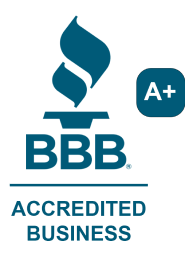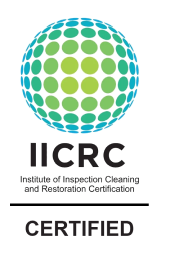Homeowners insurance is there to protect you when disaster strikes, but the best way to save money and stress is to prevent damage before it happens. The most common claims—water...
Continue ReadingInnovative Restorations' Promises
- Respectful Technician Guarantee: If our technicians smoke or swear in your home or fail to provide a company ID card, we will pay you $100!
- Clean Workspace Guarantee: If our technicians do not wear shoe covers, place drop cloths, or leave your home without cleaning up, we will hire a cleaning service to make it right at our expense.
- Apples to Apples Guarantee: If you find a lower price from a company that does what we do, we will not only match it, we will beat it by $100. (Must be same material, same scope of work, same insurance coverage, providing the same warranty and installed by a company that is a member of the BBB with the same standing) A Rating with the BBB, 4.5 star or better on Google, State Licensed, Certified Company
- Good Hands Guarantee: Only employees that have gone through our tough hiring process, background checks and drug tests will be in your home! We only use sub-contractors that meet our strict hiring standards. We have IICRC & EPA Certified technicians.
- Workmanship Guarantee: If we come out to service your home and the work isn’t to your satisfaction, we’ll come back at our own expense until it is.
- Home Comfort Guarantee: If we cannot keep you in your home or your home is otherwise uncomfortable, and you have to go stay in a hotel, the first night is on us!
Innovative Restorations FAQ
With 12 years of experience in the industry, Innovative Restorations is the trusted name in restoration in Crossville, TN. Our IICRC certified technicians follow industry-standard procedures for quality you can count on. We offer 24-hour emergency service and can work directly with your insurance provider to make the process as easy as possible for you.
Water damage insurance claims depend on a few different criteria. Ultimately, that’s a question you’ll have to clarify with your insurance company. However, we can tell you that the viability of water damage insurance claims depends primarily on what caused the damage (storm, burst pipe, plumbing malfunction, localized flood, sump pump failure, etc.). Some insurance policies will outline scenarios that will NOT be covered without specific riders like flood insurance, or sump pump failure insurance.
Contacting a restoration contractor as well as your insurance adjuster at the same time is a good idea because the restoration contractor will help make sure that not only will the water extraction and dry out be covered but the rebuild process that should follow. If the full scope of the claim isn’t outlined and agreed upon from the start, there may be issues down the line, and property owners may find themselves having to pay out of pocket to get the property completely back to normal.
It’s never a quick fix, though we’ve gathered together a multi-discipline team of contractors and disaster restoration technicians to work in tandem to complete the work as soon as possible. From structural repairs to sand/soda-blasting to odor removal to contents cleaning, our fire damage restoration crew begins as soon as the project scope is determined, and we don’t stop until the job is done and both you and the insurance company are satisfied with the results.
Anytime the moisture levels in your home are at 60% or higher, mold can grow. What’s frustrating for many property owners is that they don’t see a puddle on the floor or water dripping from the ceiling. When mold grows, the source of the moisture is usually hidden under floorboards or behind walls.
For a standard-sized home, approximately 1600 sq.ft., a full encapsulation runs between $4,000 and $5,000.
- Bactericidal, Virucidal*, Tuberculocidal, and Fungicidal**
- EPA Registered Broad-Spectrum Disinfectant
- Disinfect, Sanitize, Clean, and Deodorize in ONE STEP
- No Rinse Required, even on food contact surfaces
- Sanitizes Soft Surfaces in just 2 minutes
Bioesque is approved by the United States EPA for use on hard non-porous surfaces against SARS-CoV-2 virus (COVID-19) in just 55 seconds! Bioesque also kills:
- Kills Norovirus in just 4 minutes
- Kills 99.9% of Bacteria, Viruses*, Fungi and Molds
- Kills, Destroys and Eliminates Household Germs
- Eliminates 99.9% of most Allergens’ upon contact
Leaving sink cabinet doors ajar allows warm air to circulate around the pipes to help keep them from freezing. Wrapping pipes near exterior walls will also help protect them from freezing.
Insurance coverage is very situationally dependent. Each policy from each different company will have different levels and types of coverage. The best way to know if your damage is covered is to keep a copy of your policy on hand and call your agent directly with any questions you might have.
That depends on the types of materials that were affected by water. Drywall, carpet, and hardwood floors will take longer to dry than other materials in the space. We use moisture meters throughout the process and in many different locations to gauge the moisture levels and will continue to adjust our fans and dehumidifiers to achieve an efficient but effective dry time. The bare minimum of “three days to dry” may only produce a surface dry, but can still leave behind moisture levels that create an ideal environment for mold to grow.
Most often, yes. You’ll need to check your specific policy for the full scope of coverage, but in general, if the damage was caused by a flame, it’s covered. Your best bet is to hire a professional damage restoration company, such as Innovative Restorations, to help you through the claims process. We know how to avoid some common missteps when it comes to making sure the entire loss is documented and covered. Many homeowners and insurance companies forget, for instance, to consider that your HVAC system will need to be cleaned of soot, and, since fires are extinguished using water, many areas of your home may need to be restored due to water damage even if they weren’t directly affected by the fire.
It could be. Because mold spores are microscopic and airborne, you’ll end up breathing them into your lungs. Depending on the type of mold and how well your immune system functions, you may develop some serious health symptoms that could end up being the result of mold. That’s why a mold remediation company takes mold removal so seriously. The space affected by mold is isolated and contained during cleaning so the spores won’t spread to other areas of the house, and the remediation team stays suited up in Personal Protective Equipment (PPE) during the process.
Mold grows when the relative humidity rises above 60%. With a proper encapsulation and dehumidification system installed, mold can be prevented entirely!
Infrared heat lamps or space heaters can gently thaw frozen pipes if you notice frost accumulation. Be careful not to heat the pipes too aggressively, though, as that may cause them to burst as well. Remember never to leave a heat source unattended to avoid fires.
As a homeowner, seeing your home damaged is extremely stressful and it’s difficult to know the right course of action. Will trying to clean up on your own help or just make things worse? No matter what kind of damage you’ve incurred, the very first thing you should do is take photographs as long as the area is safe for you to be in. If you have water damage, the best thing to do is extract as much standing water as you possibly can while you wait for help. If you have fans, set them to start drying things as much as possible. They won’t be enough to completely dry the area, but they can help to minimize the chance of secondary damages. In the event of mold or fire, it’s best to just leave the damage alone until a professional can address it. Disturbed mold can disperse spores throughout the home and fire damages can be made worse if improper cleaning techniques are used.
Most homeowners start trying to remove the water themselves before they realize they’ll need to contact their insurance company about a claim so they can call in a water damage restoration company. However, standing water around anything with a power cord or outlet or sagging ceilings makes the area unsafe. Also, many insurance claims require documentation of the loss BEFORE any work is done, including removing the water. Always take plenty of photos of the damage you see before taking any action to start cleaning up the mess. Your restoration contractor will be able to back up your insurance claim scope with the necessary technical documentation as well.
Depending on the extent or location of the fire damage, some homeowners can move back in a few days or longer. The fire department will usually turn off electricity and gas to the property right away, and that won’t be restored until a building inspector says that it’s safe to turn those utilities back on. If you experienced significant smoke damage and the home’s occupants include elderly persons, young children, or those with chronic health conditions, it may be wise to stay until the smoke cleanup is complete. Contracting with a damage restoration company experienced in fire damage repair can often get you back home sooner because they’ll have the resources to hire and manage the many tradespeople who will need to work together to make the home liveable again. One perk of hiring Innovative Restorations is our guarantee to you and your family! When you hire Crossville Office for damage restoration, if we can’t keep you in your home or your home is otherwise uncomfortable, and you have to go stay in a hotel, the first night is on us! Click here to read the rest of our customer guarantee.
For the majority of surfaces in your home, bleach won’t actually get rid of your mold problem. It’s the “iceberg effect.” Visible mold is usually a small percentage of the actual amount of mold growth. Bleach can’t kill mold on porous surfaces like wood, and while tile or fiberglass surfaces can be cleaned with bleach, often the mold has spread far deeper. The reason why mold remediation companies don’t recommend DIY cleanup isn’t that they want to make more money; they know, in their experience, that a mold problem is usually far more invasive than can be seen with the naked eye. Simply cleaning the surfaces can provide false assurances that you got rid of the mold, only to have it come back time and time again.
No, we offer a semi-annual inspection of your crawl space which includes the replacement of filters and complete moisture inspection.
We will wipe high-touch surfaces, spray other surfaces and then fog the rooms and the HVAC system to disperse the disinfectant through the entire house.
Pipes running along exterior walls, especially below ground level, are prone to freezing and bursting during cold weather.
The length of time for proper restoration to occur is dependent on the type and size of the damage. A typical water damage project usually takes 5-7 days for drying and removal of any unsalvageable materials. Mold remediation can take anywhere from a few hours to several days depending on the extent of the damage. Fires cause the most extensive damage and can take weeks for restoration to be completed. Keep in mind, these are all estimates and they’re only for the restoration portion of the job. The construction and rebuild portion of the job, where everything is put back into place, has its own separate process and timeline.
If the water damage involves Category 1 water (clean and free of microbes and bacteria), many of your personal belongings can be salvaged. Category 2 water would include other water sources, including rainwater, that, while not containing biohazards or sewage, still pose health risks and the potential for destructive microbial growth and mold. A water damage restoration technician will help you sort through the contents of the property to determine what can be safely dried, what can be restored by a textile/contents technician, and what can’t be saved or salvaged. There are off-site facilities in the area that specialize in restoring water-damaged contents. Your restoration team will document all of the contents leaving the property for restoration or disposal for your records and also for reimbursement from your insurance company.
DIY soot removal is not recommended. Commercially available products can actually cause permanent damage to surfaces. Soot itself is primarily oil-based, but that residue also contains toxic, possibly biohazard contaminants.
Sometimes mold remediation is included if the cause of the mold was a “covered peril” like a burst hot water heater or water damage caused by firefighters extinguishing a fire in your house. Gradual water damage – like from a leaking pipe or hose – will often cause mold growth, but your insurance coverage will usually not cover that by claiming that it was caused by poor maintenance or neglect. If your insurance company denies your claim, you should request an inspection from a mold remediation company that can help you document the source of the mold.
No, not at all. If your floor is insulated, which we recommend, you likely won’t even know that it’s there.
We will, during the sanitizing process, be cleaning soil from some surfaces, it will not leave your home entirely dust-free or clean as a whistle like a home janitorial service. That being said, we are happy to recommend a janitorial company we trust or work with one of your choosing if that is your ultimate goal in addition to our disinfection and sanitization services.
Temperatures 20° Fahrenheit or less, sustained for 3 days or more, are likely to cause frozen pipes. If the weather is also windy, any temperature below 32° Fahrenheit can also create a frozen pipe situation.
Most homeowner’s policies cover most water damages, but not all water damages are created equal. There can be a lot of exceptions to coverage depending on the intricacies of your policy. This is why it’s a good idea to be familiar with your policy and call your agent right away when damage occurs.
If the inspection/assessment process was able to pinpoint the source and cause of the mold growth, once that source is repaired, you can be relatively confident about the success of remediation. Ask if your restoration technician has the IICRC certification for “Applied Microbial Remediation.” You can also request a “post-remediation mold clearance” from a third-party mold inspector to re-test the area for any remaining traces of mold before the area is treated with a sealer or encapsulant to resist future mold growth.
Identifying the source of the water damage is one of the first steps in both the insurance claim process and before beginning to dry out and repair the damaged areas. After all, if you replace a sagging, wet ceiling that was caused by a roof leak but don’t fix the roof, too, the next rainstorm will start the cycle all over again. The buckling to your hardwood floor could be caused by a leaking pipe. We will pinpoint the exact cause of your water damage and make sure the source is repaired. We make sure your restoration job is done right the first time.
Smoke damage is rarely limited to one area of the house, and it leaves behind a residue that can hide in crevices and out-of-reach areas, and a simple “airing out” may not be sufficient. We recommend consulting with a smoke damage technician who can help you troubleshoot the next steps.
Comparatively, it is less than running a small refrigerator.
The product we use is labeled as an irritant, not a poison, but it is recommended that you and your pets leave the home until the air has had time to settle. This generally takes about an hour after we are done. We recommend going grocery shopping or to the park while it settles, and then you can come home to a clean, safe home!
Inexpensive styrofoam spigot covers go a long way to prevent the adjacent plumbing from freezing, as well as draining any water from those faucets after shutting off their water supply inside the building. Most homeowners forget this important step, only to have their basements or crawl spaces flood in the spring when they turn their outdoor faucets on for the first time after winter.
A good portion of water damage can be prevented by proper household maintenance. Routine plumbing maintenance, as well as sump pump and appliance maintenance, are effective ways to avoid preventable damages. If you live in a cold climate, preparing your home for the winter can also help avoid damage. Finally, it’s a good idea to regularly check the exterior of your home, particularly your roof, for damage to ensure water isn’t unexpectedly leaking into your home.
In most cases, it is NOT covered by insurance, but financing is available, and approval is easy. Call today!
Yes. Unlike other products on the market, surfaces don’t need to be “re-cleaned” after the application of this disinfectant. It’s non-toxic, so your surfaces are safe after application, even if your toddler or your dog licks the counter when they get home. You can even prepare food on them without having to worry about contamination in your food.
Many of our competitors choose to use chemicals that require a wet “dwell” time on the surfaces in order to kill viruses. Bioesque has been tested and proven to kill them in only about a minute.
Good question. A lot of products on the market today and in use by other companies are not approved for “soft good” use. Ours is.
Because the fogging equipment causes the chemical to be airborne in order to adequately circulate throughout the space, air-breathing pets like cats, dogs, and birds, may be more comfortable staying out of the house until the chemical has a chance to settle. It’s non-toxic for aquatic life, though – so your fish will be fine!





